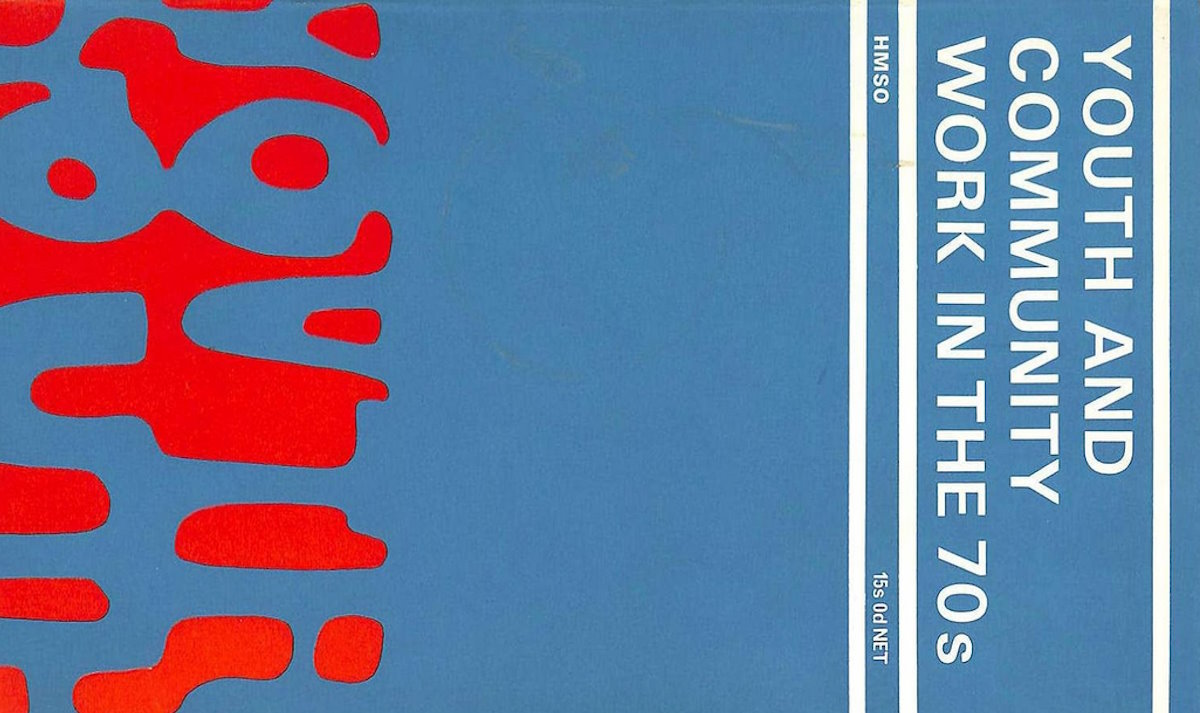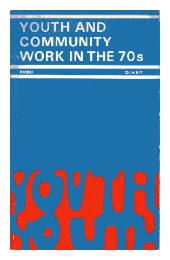
a collection of chapters from the ‘Fairbairn-Milson’ Report (1969)
x the youth service and the under-fourteens
links
fred milson and the practice of youth and community work
the albemarle report and youth work
the albemarle report – extracts
Introduction
Youth and Community Work in the 70s arose out of a rather ill-focused review of youth work developments after the Albemarle Report (Ministry of Education 1960) (see Davies 1999). It sprang from the work of two sub-committees (there were going to be more) – one chaired by Andrew Fairbairn – examined youth work and schooling and further education; the other – chaired by Fred Milson – youth work and the relationship with the ‘adult community’. As Davies (1999) and Holmes (2001) have reported, there was considerable tension between the two committees around the future role of the youth service. The former committee, and in particular its chair, wanted to locate youth work far more fully within schools – especially community schools. Milson and his colleagues were sceptical of the extent to which community schools could represent the full range of community interests (Holmes 2001: 225). The result was a strange document that contradicted itself in places and bore all the marks of political (or administrative compromise (Davis 1999: 124-8). However, it did have an explicit position around the sort of society that should be aimed at. Drawing on Amitai Etzioni’s (1968) communitarian vision they argued for ‘The Active Society’.
‘The Active Society’ is the best short description we can think of to describe our commitment and in support of our contention we start with a belief, relevant to all educational and social welfare provision, which rests on the twin bases of our view of present-day society and the development of personality.
In a country such as ours, subject to the changes consequent upon a rapidly changing technology, society needs to engage in an intensive and perpetual transformation of itself, unless it is to respond to tomorrow’s world with yesterday’s activities and modes of organization. Our commitment is to a society in which every member can be publicly active; for only in this way can society become positively responsive to them, and, in the constant renewal of itself, reflect their values. (YSDC 1969: 59-60)
Such a focus, it was argued, made for the healthy development of both communities and individuals. There was an emphasis on community development – on the rejuvenating and development of small, social and local groups. This led the Report’s writers into making some significant and brave statements about the work with ‘the young adult group’ (Davies 1999: 126).
[T]here can, we believe, be no lasting answers to the dilemmas of youth work without a radical rethinking of the position of young people in society, and of adult attitudes to the young… We ask, therefore, for work with these young people through which they and their society can be helped towards maturity, as part of an ‘active society’ responsive and eager for change and development. We ask for work with young adults which is based upon the principles of community development by all the various agencies concerned with young people, not just those which comprise the Youth Service.
Those who work with young adults should no longer see themselves as ‘providers’, placing young people in the position of ‘receivers’ who are sometimes to be given ‘shadow’ responsibilities… We see older adults as ‘enablers’: enabling those younger than themselves to distinguish their needs from their wants: and enabling these to be satisfied with community resources where these are required.
The first step in changing the pattern of work for the young adult is thus self-determination. However, it is our hope that something still more important can develop from this. One of the major criticisms of present youth provision is that it isolates the young from the rest of society… It is becoming obvious that adults must in future accept young people as social equals and no longer as children expected to play adult roles only in those areas where it is convenient that they should do so. We see it as a task of the Youth Service to further this engagement of the young in and with society. There is talk in many quarters today about ‘participation’. An important aim of Youth Service should be to facilitate critical and responsible participation among the rising generation.
In suggesting this, it is no part of our aim to achieve a comfortable integration of the youth and adult populations, nor attempt to ‘socialize’ the young so that they are reconciled with the status quo, and capitulate to its values… Work with young adults, must, in the future therefore, no longer be a device or the social control of them by others, and it must be seen not to be, lest it be mistrusted. (YSDC 1969: 73-7)
The Report made various recommendations around training (extending the basic period of professional training to two years coincided with the Report but had predated it) – and a number of youth services took ‘community’ into their names – but as Bernard Davies (1999; 133) has argued it is difficult to point to any other concrete outcomes.
Its ‘hard’ proposals for change were few and were not adequately developed for effective operationalization. Its challenging philosophical and methodological messages, when they did not simply confuse, lacked specificity or were internally contradictory, exposing the political and Political compromises which had produced them. Too often, therefore, the report, rather than building on the image and achievements of Albemarle (as the YSDC had obviously hoped) proved to be distracting, diversionary, and even debilitating for the service’s work with young people.
References
Davies, B. (1999) From Voluntaryism to Welfare State. A history of the Youth Service in England Volume 1: 1939-1979, Leicester: Youth Work Press.
Department of Education and Science (1969) Youth and Community Work in the 70s. Proposals by the Youth Service Development Council (The ‘Fairbairn-Milson Report’), London: HMSO.
Holmes, J. (2001) ‘Youth and Community Work in the 1970s. A lost opportunity?’ in R. Gilchrist, T. Jeffs and J. Spence (eds.) Essays in the History of Community and Youth Work, Leicester: Youth Work Press.
© Mark K. Smith 2003. Update June 2019.
The chapters have been reproduced here by the informal education homepage under licence from from the Controller of HMSO and the Queen’s Printer for Scotland. The informal education homepage holds a licence to reproduce public service information and another to reproduce Parliamentary material.
First placed in the archives: April 2003 Update June 2019.

 introduction
introduction